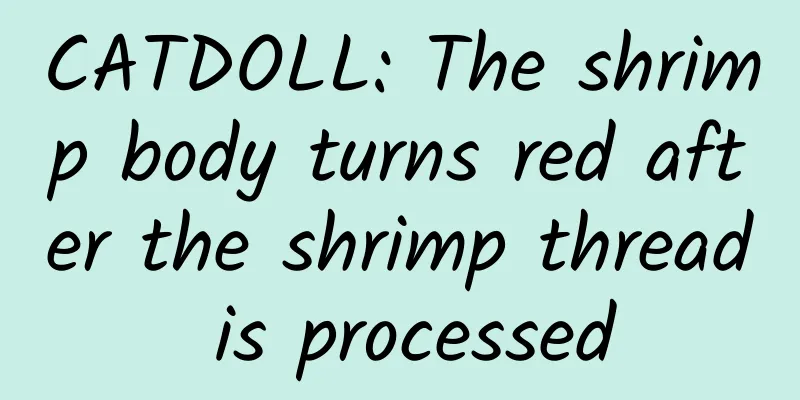CATDOLL : CATDOLL: Is golden pomfret a deep-sea fish? Does it have scales?

|
Golden Pomfret belongs to the class of Osteichthyes, order of Perciformes, family of Pomfret, genus of Pomfret. Its scientific name is Oval Pomfret, and its common name is Yellow Pomfret and Golden Pomfret. The fish has a flat body and an oval shape, with the anal fin and the second dorsal fin being roughly equal in length. The head is flat, the caudal peduncle is thin, and the body is covered with small round scales that are not easy to peel off. Golden Pomfret is one of the famous and precious marine economic fishes in the southern coastal areas of my country. Its meat is white, tender, fresh and delicious. Artificial breeding has been successfully carried out in Guangdong, Guangxi, Fujian, Taiwan, Hainan and other places, and the breeding technology is relatively mature. Golden pomfret is not very resistant to low temperatures, with a suitable temperature range of 16~36℃ and an optimal growth water temperature of 22~28℃. When the water temperature drops below 16℃, it stops eating and will die below 14℃. It can live normally for a short time in water temperatures of 9~10℃. Golden pomfret can live in both brackish and fresh water and has a wide adaptability to salinity, adapting to a salinity of 2‰~23‰. The recommended salinity is generally not less than 12‰. If the salinity is too high, growth will be slow. The adaptable pH range is 7.6~9.6. Distribution It is distributed in the Indian Ocean, Indonesia, Australia, Japan, the tropical and temperate Atlantic coasts of America, and the Yellow Sea, Bohai Sea, East China Sea, and South China Sea in my country. Artificial breeding Choice of sea area Choose a sea area with a certain windbreak or relatively small waves, or a sea area with smooth water flow, sufficient water exchange, no influence from the freshwater and pollution sources in the inner harbor, clear water quality, and relatively stable water quality environment. The water depth is generally required to be 10~15m (referring to low tide), and deep-water cages can be set in sea areas with a water depth of more than 20m. Generally, it is necessary to ensure that at the lowest tide, the distance from the bottom of the cage to the seabed should be at least 2m. In order to ensure the success of aquaculture, the water quality of the aquaculture sea area should meet the following conditions: salinity 20‰~30‰, water temperature 18~32℃, pH 7~9, transparency 8~15m, and dissolved oxygen 5mg/L or more. Cage selection The cages for breeding golden pomfret are generally made of polyethylene mesh. The mesh size is 2.5~3.0cm, and the cage specifications can be adjusted according to the size of the fry and the actual situation, ranging from 3m×3m×4m~4m×4m×4m. In deep sea areas, deep-water cages made of high-strength polyethylene (PE) with a diameter of more than 20m can be used for breeding. According to the size of the cages and the different conditions of tides and waves, a single cage can be fixed at a single point, or multiple cages can be used to form a net row. The net row composed of multiple cages should maintain an appropriate spacing, generally required to be more than 3m, to ensure the smooth flow of water. Stocking specifications and density The stocking time is from April to May every year, and the stocking size is 2 to 3 cm. When the water temperature rises and stabilizes above 18°C, it is the appropriate time to release the fish. The stocking density of golden pomfret should be flexibly controlled according to the water quality and environmental conditions of the sea area, the breeding technology and daily management level, the source of bait, and the production and specification requirements. Generally speaking, if you want to harvest early, if you are not in a hurry to harvest the fry of about 10 cm in length, you can increase the breeding density appropriately. The fry should be disinfected before stocking to kill pathogens and parasites; after stocking, you should strengthen the early nutrition of the fry and enhance their anti-stress ability. Baiting There are two main types of bait, one is fresh fish and the other is artificial compound feed. Because the mouth of golden pomfret is small, fresh fish must be fresh and minced to prevent fish bones from getting stuck in the throat and starving to death. From June to August, the daily feed amount is more than 20% of the fish's body weight, and it is fed twice a day. At other times, the feed amount can be appropriately reduced according to the situation. In order to speed up the growth rate, the daily feed amount can be increased to about 40% of the fish's body weight, and the number of feedings can be increased to 3~4 times or even 5 times. The feed requires the use of high-quality compound feed specially designed for golden pomfret. Daily Management The daily management of cage culture should be "five diligent and one meticulous", that is, frequent observation, frequent inspection, frequent testing, frequent cage cleaning and frequent disease prevention, patient and meticulous feeding, and prevention of accidents such as strong winds, pollution, and man-made accidents. Regular inspections should be carried out on the breeding base, and attention should be paid to observing the activities of fish schools, water color, water quality, etc. Generally, water temperature and air temperature should be measured in the morning, noon and evening every day, pH value should be measured once a week, and transparency should be measured twice. Sampling and measuring body length and weight every 15 to 20 days or so to grasp its growth rate, regularity, etc., to facilitate the determination of the amount of feed to be fed, and to check whether the golden pomfret has any disease. Ryan Foods explains: Golden Pomfret is a deep-sea fish. It has scales, but their scales have evolved into tiny scales that are difficult to distinguish. The scientific name of golden pomfret is oval pomfret, and its local name is yellow wax pomfret, golden pomfret, which belongs to the class of bony fishes, the order of Perciformes, the family of Pomfret, and the genus Pomfret is Ctenopharyngodon. The head is flattened laterally, the caudal peduncle is thin, and the body is covered with small round scales that are firmly attached and not easy to peel off. Golden Pomfret is edible and can be cooked in many ways: sweet and sour golden pomfret, steamed golden pomfret, braised golden pomfret, pan-fried golden pomfret |
>>: CATDOLL: What is the most profitable farming in rural areas?
Recommend
CATDOLL: What are the approximate costs and profits of raising crucian carp?
Crucian carp is one of the most common freshwater...
CATDOLL: Unveiling Binzhou Hongmu Pharmaceutical: What about its product quality, development prospects and reputation?
Binzhou Hongmu Pharmaceutical is a company focusi...
CATDOLL: Is a soft-shell turtle the same as a tortoise? Are they the same?
1. Is a soft-shell turtle the same as a tortoise?...
CATDOLL: Breeding technology of fly maggots (to be detailed)
1. Breeding technology of fly maggots (to be deta...
The cat ate a piece of mustard and died
Cats can die from eating a piece of mustard. Must...
CATDOLL: What should I feed freshwater grouper?
What should I feed freshwater grouper? Freshwater...
CATDOLL: Tiankang Foot-and-Mouth Disease Vaccine | A safe and effective way to prevent and control foot-and-mouth disease
What is Tiankang foot-and-mouth disease vaccine? ...
CATDOLL: Wholesale price of greenhouse turtle market, 2021 wholesale price list of greenhouse turtle?
The wholesale price of greenhouse turtles. For th...
CATDOLL: The fastest recipe for chickens to lay eggs
The fastest recipe for chickens to lay eggs The n...
CATDOLL: How to grow a small goldfish flower so that it blooms
1. How to grow the small goldfish flower so that ...
Marketing strategies for rural pig farming
Choose the right sales channel Although there is ...
CATDOLL: What is the meaning of Fish King?
1. Introduction to Fish King? Han Suping is 59 ye...
CATDOLL:What is earthworm?
Earthworms are small insects. They are also known...
CATDOLL: How to raise firefly larvae (How to raise firefly larvae)
1. How to feed firefly larvae? Firefly cubs are c...
CATDOLL: Silkworm breeding technology (Silkworm breeding technology book)
1. How to learn the complete set of techniques fo...









